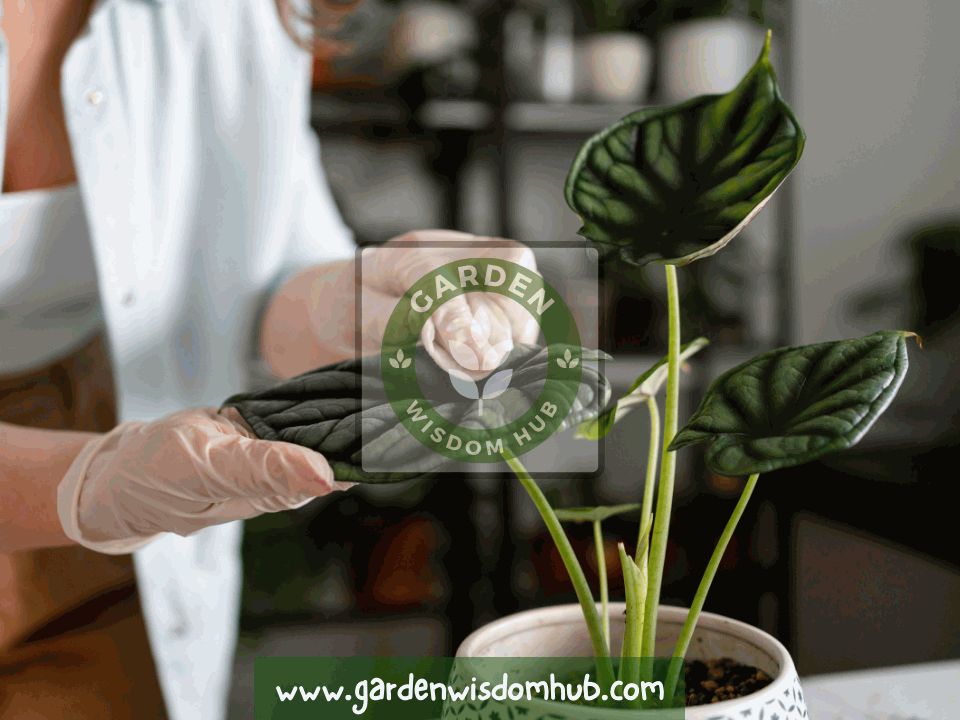Overwatered Snake Plant:
You have an overwatered snake plant, huh? You may have been generous with the watering can. We’ve all been there—don’t worry. It is the plant equivalent of drowning in a kiddie pool. My friend, there is no reason to worry.
Snake plants, or “mother-in-law’s tongue,” are the most popular and vibrant houseplants. These bad guys are popular because they can tolerate practically anything and are easy to maintain. Drowning them can harm them, so prevent it.
Signs of Overwatered Snake Plant:
Check out this humorous instruction on how to recognize, treat, and prevent overwatered snake plants. Overwatered snake plants show these symptoms: Snake plants can’t resist a little extra water, despite their best efforts. Watch out for these warning signs:
1. Yellow or withering leaves:
Your snake plant appears to be overwatered. Due to excessive moisture consumption, these leaves are wilting and turning yellow.
2. Brown spots:
Time to escape them! Are there brown spots? If your plant’s roots are waterlogged, those little pests may appear. It looks like a tantrum! Root rot causes those pesky brown patches. Now is the moment to pamper your plant and dry up its roots!
3. Pliable/mushy stems:
Whoops! It appears that overwatering can mush plant stems. They seem drowned in water and unable to breathe. Let’s give those roots some breathing room.
4. Saggy Foliage:
Excess water causes those poor leaves to sag and go limp for no reason.
5. Roots:
Deteriorating roots might become mushy, slimy, or rot.
6. Fungal Growth:
Your plants seem to be getting too much love and attention. If they have strange-looking white or gray powdery areas, they have fungal growth. Reduce the watering and let the plants breathe. Your snake plant may be thirsty for several reasons.
Causes of an Overwatered Snake Plant:
The following factors can cause overwatering:
Watering Issues:
Watering snake plants too much is bad. They prefer dry periods between waterings. The drainage issue is making sure the soil and container can drain extra water to avoid a pool party.
High humidity:
High humidity harms snake plants. They prefer dry climates, so keep them away from humid areas. Believe me—they’ll appreciate it!
Pot Size Mistake:
A too-large container may cause the plant to become saturated, causing overwatering. Droopy leaves, withering foliage, and moist soil may suggest that your snake plant is overwatered. Your green friend may be feeling damp. Take a pause and let it dry!
Symptoms of an Overwatered Snake Plant:
These signs may indicate that your snake plant is overwaterlogged.
- Overwatering can turn those beautiful green leaves a nasty yellow.
- Should we avoid submerging plants? The stems become mushy and contortionist-flexible. This is “squishy stems.”
- Root rot may generate a bad dirt smell. Root rot may cause a bad stench.
- Sagging occurs when foliage becomes overly loose due to excessive water.
Fungal Growth:
Look at the lovely white or gray powdered flecks on the leaves! I think the plants are throwing a party for the fungi.
How to Save Overwatered Snake Plant:
Overwatered Snake Plant Restore Tips
1. End watering mania:
You must cease watering your plants to prevent further damage.
2. Repot with dry soil:
Remove the plant from its current container, remove any old dirt, and report it in dry, fresh soil. Take a chance on LECA balls. They will hilariously enhance drainage.
3. Find a spot:
It will benefit from strong, indirect light to recuperate.
4. Check soil wetness:
Before drinking, use a moisture meter or feel the soil to see if it’s slightly damp.
5. Water When Needed:
Before watering, the soil must be completely dry. Why not offer thirsty plants freedom by utilizing self-watering planters? These clever technologies keep your plants hydrated without your intervention, eliminating the need to guess. Say goodbye to overwatering and underwatering and hello to happy, healthy plants.
How to Prevent Overwatering:
Good drainage is crucial! Use containers with drainage holes. Use well-draining soil, preferably succulent or cactus-friendly. Reduce water use: Just moisten the top inch of dry soil. The plant’s root ball should fit comfortably in the container. This pot fits perfectly.
How Do You Fix an Overwatered Snake Plant?
You turned your snake plant into a mini-water park, right? Good news—the answer is easy to find. Put the watering can down and leave slowly. You no longer need to drown your poor plant. Take a pause and let it dry. I promise your snake plant will appreciate a respite from water. You must give that plant clean, well-draining soil. Find a sunny spot for it to catch some sun! Keep an eye on soil moisture and only water when dry.
How Do You Tell If a Snake Plant Is Underwatered or Overwatered?
Ignored leaves may become desert-like when watered. They may dry out and crisp, and the leaf tips may curl or brown. Water those plants now! You may have overwatered! Plants with too much water develop various undesirable traits. As the leaves turn yellow, the stems become mushy, and the dirt smells bad. Time to stop watering those plants!
How Do You Reverse Overwatered Plants?
Can Poorly Watered Plants Heal? Yes, the following are the ways by which you can reverse the damage caused to your overwatered plant:
- Turn off the water supply and let the soil dry up.
- Repot the plant if needed. Move the plant from waterlogged soil to dry, well-draining soil.
- Give the plant lots of bright, indirect light.
- Watch your watering: To avoid overwatering disasters, adjust your watering habits promptly.
How to Fix a Droopy Snake Plant?
Watering their snake plant may have been excessive. Everything is gloomy now. You poor thing! Overwatered plants can be saved by: Start by stopping the watering. Give it beautiful, dry soil to live in. Finally, give it lots of light to recover.
Overwatered Snake Plant Treatments
Following are some additional snake plant treatments:
Air circulation:
Create a moderate breeze around the plant to enhance air circulation. This accelerates soil drying. Why not open the windows or utilize fans to bring fresh air into your space? A simple and effective way to ventilate and cool.
Moisture meter:
Remember to use a moisture meter while checking soil moisture. It’s like having a miniature detective to help you figure out how much water your plant needs! Because of this clever technology, you’ll never overwater your plants again! Make sure to water your plants only when the soil is dry and it will take care of you.
Pot feet:
Use a pot feet or a plant stand. It may support your container. Your plants will be happy and drainage will improve. By not leaving water in the pot, we can avoid root rot. We can keep the roots dry.
These extra precautions will safeguard your snake plant from overwatering. This keeps your plant happy and healthy throughout its life.
Some Final Thoughts:
Snake plants often die from overwatering, but don’t worry. A little gentle loving care can remedy this problem. Install drainage holes, choose soil that won’t retain water, and monitor your watering. With these simple steps, you can revive your snake plant quickly.
Do not forget to check out our guides on the following topics. You can visit our website Garden Wisdom Hub to read articles of your own choice.
How often to water the Snake Plant?
How Much Light Does a Snake Plant Need?
Why Are My Rubber Tree Leaves Curling?
Do not forget to dig deep into these topics and explore details about them:
Snake Plant Problems & Disadvantages
FAQs:
If you have any questions, you can checkout our faqs.
- You can also watch this video for more guide: How To Save Snake Plant Overwatered
1. How often should I water my snake plant?
It needs watering every two to six weeks or when the top inch of soil is dry. If it gets thirsty, give it a drink instead of drowning it.
2. Is it better to underwater than overwater a snake plant?
Request a friend. Snake plants are the most self-sufficient! Watering them well is best when they are neglected. This makes it best to keep their soil dry rather than submerge it.
3. Can I use regular potting soil for my snake plant?
Obviously! Use normal potting soil for your snake plant. You should also give it a great sense of care and affection because who doesn’t like a cared snake plant? Use a succulent or cactus mix with sufficient drainage to avoid root rot and overwatering. I promise your plants will appreciate it.
4. Why are the tips of my snake plant turning yellow?
Your plant isn’t trying to start a new fashion trend, so don’t worry. This could be happening for many reasons, but we shouldn’t jump to conclusions now. We will resolve it, and your snake plant will be beautiful and green again in no time!
Wow, your plants’ yellow tips could be caused by several things. You may have been too generous with the watering can or your home’s air is as dry as the Sahara. Remember that annoying soil drainage issue. With a little information, you can keep your snake plant healthy by addressing the causes of overwatering and its irritating symptoms.
James Porter
Welcome to our haven of gardening and plant care, where outdoor and indoor planting enthusiasts come together! At Gardening Wisdom Hub, we aim to provide you with the most authentic information on anything related to gardening, plant care, seasonal planting etc.
The author of our website is James Porter, an experienced industry veteran. He has a deep interest in everything green. James’s enthusiasm for exploring plants’ features and learning new gardening methods began at a young age. Gradually, his passion increased with time, leading him to become a highly esteemed professional. His extensive knowledge makes him a priceless resource for inexperienced and seasoned gardeners.

